Selling homemade quilts is a delightful blend of creativity and entrepreneurship. Crafting these intricate fabric masterpieces is only the beginning; finding the right avenues to share your creations with the world is equally vital.
This guide will explore where and how to sell your homemade quilts effectively.
From establishing an online presence on platforms like Etsy and harnessing the power of social media to participating in local craft fairs and optimizing your pricing strategies.
We’ll delve into actionable tips and strategies to help you connect with the right audience and turn your passion for quilting into a successful venture.
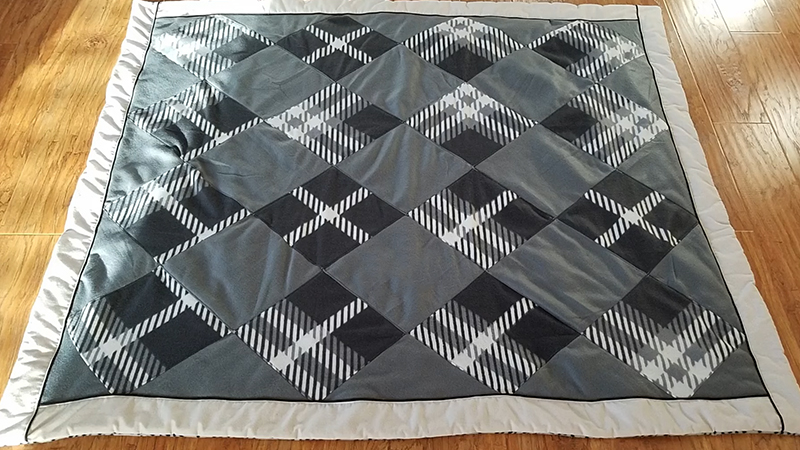
Where to Sell Homemade Quilts?
There are various platforms and venues where you can sell homemade quilts.
Here are some popular options:
Online Marketplaces
- Etsy: Etsy is a well-known platform for handmade and vintage items. It has a dedicated section for handmade quilts and attracts many buyers interested in unique, artisanal products.
- Amazon Handmade: This is a marketplace specifically for handmade items. It provides a platform to reach a vast customer base and offers tools tailored to artisans and crafters.
- eBay: While eBay is a general marketplace, it has a category for handmade items, including quilts. It allows you to auction your quilts or list them at fixed prices.
Personal Website or Online Store
Design a user-friendly website with an intuitive navigation menu and an appealing layout highlighting your quilts.
Optimize your site for search engines (SEO) to improve its visibility in search results. Consider offering secure payment options and detailed product information to instill trust in potential buyers.
Social Media Platforms
Actively engage with your audience by regularly posting high-quality images of your quilts and informative captions. Utilize relevant hashtags to increase discoverability.
Encourage interaction by responding to comments and messages promptly. Consider using features like Instagram Shopping to facilitate direct sales.
Craft Fairs and Artisan Markets
Create an inviting booth display that showcases a variety of your quilts, demonstrating your range and expertise. Use signage to convey your brand identity and provide pricing information.
Engage with visitors by sharing stories about your quilts and offering insights into your creative process. Collect contact information for potential future sales or newsletter sign-ups.
Consignment or Specialty Boutiques
Establish clear terms and agreements with the boutique regarding pricing, commission rates, and consignment periods.
Provide the boutique with high-quality images and descriptions of your quilts for display. Regularly communicate with the boutique to restock inventory and discuss sales performance.
Online Auctions or Auction Houses
Research reputable online auction platforms or local houses specializing in handmade crafts. Please provide them with detailed information about your quilts, including provenance, materials used, and any special techniques employed. Consider setting a reserve price to ensure you receive a fair value for your work.
Crafting Co-operatives or Studios
Collaborate with fellow artisans to create a welcoming and supportive environment. Display your quilts prominently and participate in joint events or promotions.
Consider offering workshops or classes to further engage with the community and attract potential buyers.
Local Art Galleries or Studios
Develop a portfolio of your quilts and approach galleries or studios with a professional proposal. Include high-quality images, descriptions, and pricing information.
Be prepared to participate in gallery exhibitions and attend openings to network with potential buyers.
Crafting Subscription Boxes or Kits
Collaborate with subscription box services or crafting kit companies to provide exclusive quilted items. Ensure your work aligns with their brand and target audience.
Include your contact information or website details in the package so interested customers can learn more about your other offerings.
Online Forums and Communities
Actively participate in discussions related to quilting and share your expertise. Establish credibility within the community by offering valuable insights and advice.
When appropriate, share your quilts and offer them for sale, ensuring compliance with forum rules and guidelines.
How to Sell Homemade Quilts?
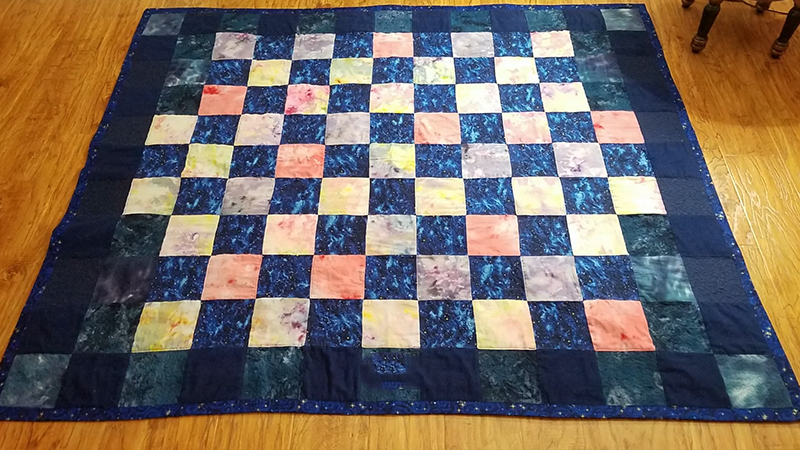
Selling homemade quilts can be rewarding, and a step-by-step guide can help you navigate the process effectively.
Here’s a comprehensive guide on how to sell homemade quilts:
Create High-Quality Quilts
Ensure your quilts meet high-quality standards by using premium fabrics, threads, and batting. Pay attention to detail, including precise stitching and even seams. Develop your unique style or design that sets your quilts apart.
Document Your Work
Capture high-quality photographs of your quilts using natural light and a clean, uncluttered background. Take multiple shots from different angles, capturing close-ups of intricate details. Edit and enhance images for clarity and appeal.
Price Your Quilts
Determine the pricing for your quilts by calculating the cost of materials, labor, and overhead. Research the market to understand pricing for similar quilts factor in a reasonable profit margin.
Choose Sales Platforms
Select where you want to sell your quilts. This could be online marketplaces like Etsy, Amazon Handmade, or eBay, your personal e-commerce website, social media platforms like Instagram and Facebook, or local markets such as craft fairs and artisan markets.
Create Listings
Prepare detailed listings for your quilts with compelling product descriptions highlighting unique features and materials. Set competitive prices based on your research. Add high-quality images to showcase your quilts.
Market Your Quilts
Promote your quilts to reach a wider audience. Utilize social media to share images, stories, and behind-the-scenes content.
Engage with potential customers through comments, direct messages, and social media posts. Consider running targeted ads or promoted posts to increase visibility.
Handle Sales and Transactions
Be prepared to manage sales and transactions by providing clear payment options, including PayPal, credit cards, or other secure methods.
Package quilts securely to prevent damage during shipping. Communicate shipping policies, estimated delivery times, and tracking information to buyers.
Customer Service
Deliver exceptional customer service by responding promptly to inquiries and addressing customer concerns professionally.
Keep buyers informed about the progress of their order: request reviews and testimonials from satisfied customers.
Legal and Financial Considerations
Ensure compliance with legal and financial obligations by registering your business and obtaining necessary licenses or permits.
Keep accurate records of income and expenses for tax purposes. Consider liability insurance if selling at local events.
Grow Your Business
Continuously improve and expand your quilting business by innovating with new designs or techniques.
Attend crafting workshops or classes to enhance your skills network with fellow artisans and potential collaborators.
Evaluate and Adjust
Regularly assess your sales performance and make adjustments. Review which platforms generate the most sales and focus your efforts accordingly.
Adjust pricing, product offerings, and marketing strategies based on customer feedback and market trends.
Selling Quilts Tips
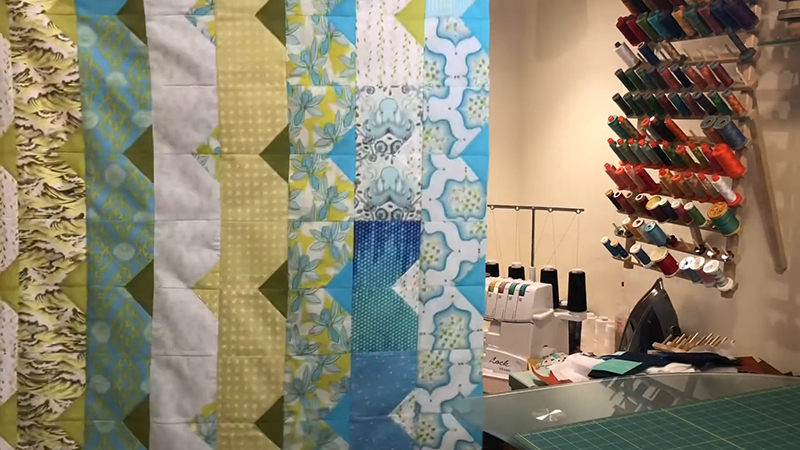
Selling homemade quilts can be a fulfilling and potentially profitable venture, combining your passion for quilting with an opportunity to share your craft with others.
Here are some concise tips for selling quilts:
High-Quality Craftsmanship
Consistently strive for precision in your quilting work. Pay attention to every stitch and ensure seams are straight and secure.
Use high-quality materials, including fabrics, threads, and batting, to ensure the longevity and durability of your quilts.
Unique Design
Experiment with different patterns, color combinations, and techniques to develop a signature style that separates your quilts.
Incorporate personal touches or distinctive elements that make your quilts instantly recognizable.
Professional Photography
Invest in a good camera or hire a professional photographer to capture high-resolution images of your quilts.
Consider staging your quilts in aesthetically pleasing settings or using props that complement their colors and themes.
Competitive Pricing
Conduct thorough market research to understand pricing trends for similar quality and style quilts.
When determining prices, factor in the cost of materials, your time, and any additional expenses like shipping or packaging.
Online Presence
Create a user-friendly, visually appealing website where customers can easily browse and purchase your quilts. Actively engage with potential buyers on social media platforms, sharing updates about your latest creations, process insights, and behind-the-scenes glimpses.
Storytelling
Share the inspirations behind your quilts, whether it’s a special memory, a particular landscape, or a meaningful theme.
Use your website, social media captions, or product descriptions to provide context and emotional connection for potential buyers.
Customization
Offer a range of options for customization, such as fabric choices, color variations, or personalized details like monograms or messages.
Communicate these options on your website or during customer interactions to make the ordering process seamless.
Customer Engagement
Respond promptly to inquiries and messages from potential buyers, providing helpful and informative responses.
Keep customers updated on the progress of their orders, including estimated completion and delivery times.
Legal Compliance
Familiarize yourself with local and international laws related to selling handmade goods, including tax regulations and copyright laws.
Ensure you have the necessary permits or licenses to operate your quilting business legally.
Continuous Improvement
Stay updated on the latest quilting techniques, trends, and tools by attending workshops, taking online courses, or joining quilting communities.
Regularly evaluate your processes and seek ways to enhance efficiency and quality in your quilting work.
Networking
Attend quilting exhibitions, craft fairs, or workshops to meet fellow artisans and potential collaborators.
Participate in online forums or social media groups focused on quilting to expand your network and gain insights from other quilters.
Adaptation
Pay attention to shifts in customer preferences or market trends and be willing to adjust your offerings or marketing strategies accordingly.
Embrace new technologies or platforms to enhance your online presence and customer experience.
Feedback
Actively seek out feedback from customers to understand their preferences and areas for improvement. Use customer testimonials or reviews to build trust and credibility with potential buyers.
Sustainability
Consider using eco-friendly and sustainable materials in your quilts to appeal to environmentally conscious buyers.
Communicate your commitment to sustainability in your marketing materials to attract like-minded customers.
Goals
Set specific, measurable, achievable, relevant, and time-bound (SMART) goals for your quilting business. Regularly review and adjust them to stay on track toward success.
Shipping and Packaging
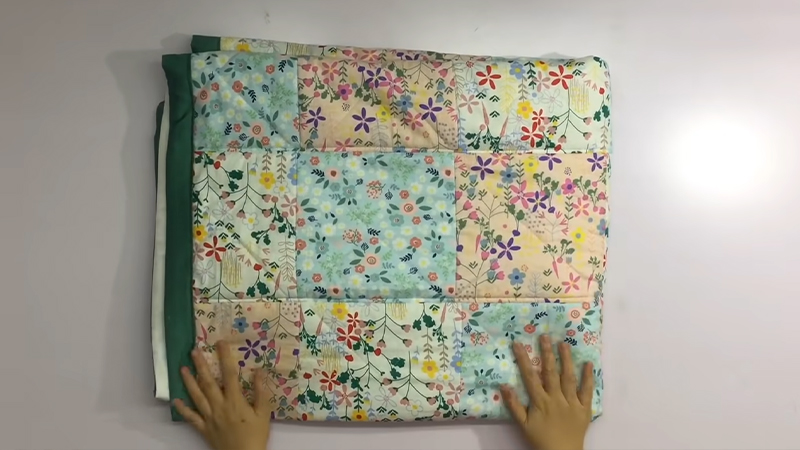
Shipping and packaging are crucial aspects of selling homemade quilts. Ensuring that your quilts reach customers in perfect condition and on time is essential for a positive buying experience.
Here’s a detailed guide on how to handle shipping and packaging:
Shipping:
Choose a Reliable Shipping Carrier
Select a reputable shipping company like USPS, FedEx, UPS, or DHL. Consider factors like shipping rates, delivery times, and package tracking options.
Calculate Shipping Costs
Determine the shipping cost based on package dimensions, weight, destination, and chosen carrier. Offer transparent shipping rates to customers.
Offer Multiple Shipping Options
Provide customers with a choice of shipping methods, such as standard, expedited, or express. This caters to different preferences and urgency levels.
Set Clear Shipping Policies
Clearly state your shipping policies on your website or sales platform. Include information about processing times, shipping fees, and estimated delivery dates.
Package Safely and Securely
Use appropriate packaging materials like sturdy boxes, bubble wrap, tissue paper, and packing tape to protect the quilt during transit.
Packaging:
Fold and Wrap the Quilt
Gently fold the quilt, taking care not to create permanent creases. Wrap it in acid-free tissue paper or a protective fabric bag to prevent dust and moisture from affecting the quilt.
Place in a Plastic Bag
If the quilt is precious or if you’re concerned about moisture, consider placing it in a sealed plastic bag before wrapping it.
Add a Thank-You Note
Include a personalized thank-you note for the customer, expressing gratitude for their purchase. Optionally, provide care instructions to help them maintain the quilt’s quality.
Package in a Sturdy Box
Use a well-sized, sturdy box with ample room for the quilt and padding materials. Ensure it’s in good condition with no tears or damages.
Add Padding and Support
Fill empty spaces in the box with additional padding, like bubble wrap or packing peanuts, to prevent shifting during transit. Add support to areas that may be more delicate.
Seal and Label the Box
Securely seal the box with strong packing tape, reinforcing all seams. Clearly label the box with the recipient’s address, your return address, and any necessary shipping labels or customs forms.
Consider Branding
If you have a brand logo or sticker, consider adding it to the packaging for a professional touch. This can help create a memorable unboxing experience for the customer.
Weigh and Measure for Accuracy
Accurately weigh and measure the packaged quilt to ensure you’ve chosen the correct shipping rate. This helps prevent any unexpected costs or delays.
Legal Considerations and Documentation
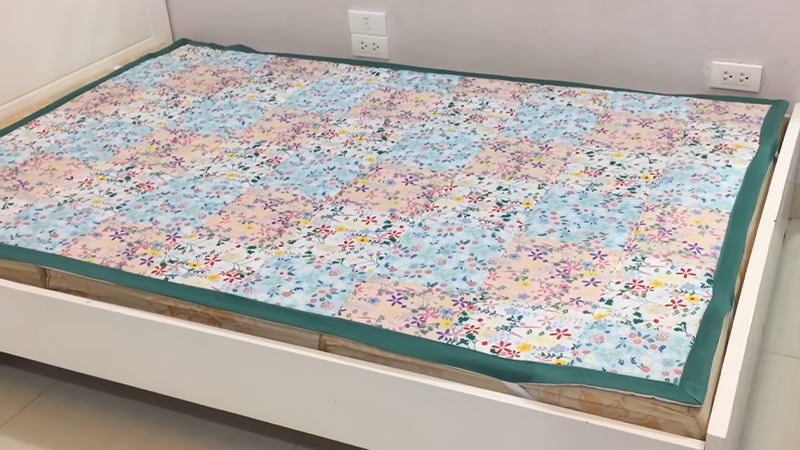
Legal considerations and documentation are essential to selling homemade quilts to protect your business, comply with regulations, and establish customer trust.
Here’s a guide on key legal aspects and necessary documentation:
Business Structure:
Choose a Business Structure:
Decide on a legal structure for your quilting business. Standard options include a sole proprietorship, LLC (Limited Liability Company), or corporation.
Each has different legal and tax implications, so consult a legal or financial advisor to choose the right structure for your situation.
Register Your Business:
Depending on your location and business structure, you may need to register your business with the appropriate government authorities.
This may involve obtaining an EIN (Employer Identification Number) or registering a trade name or DBA (Doing Business As) if you operate under a different name.
Taxes
- Sales Tax: Determine whether you must collect sales tax on your quilt sales. Sales tax regulations vary by jurisdiction, so check with your local tax authority or consult a tax professional for guidance.
- Income Tax: Keep accurate records of your income and expenses related to your quilting business for tax purposes. Consider working with an accountant or tax professional to ensure compliance with income tax laws.
Copyright and Trademarks
Be aware of copyright and trademark laws regarding your quilt designs and branding.
Original quilt designs are automatically protected by copyright, but registering your work with the U.S. Copyright Office provides additional legal protection. Trademark any unique branding elements you use for your business.
Liability and Insurance
Consider obtaining liability insurance to protect yourself in case of accidents or injuries related to your business. This is especially important if you host events, teach classes, or sell quilts at physical locations.
Contracts and Agreements
Create clear and comprehensive terms of sale, including payment terms, return policies, and any warranties or guarantees. Ensure customers understand what they’re agreeing to when they purchase.
Wholesale and Consignment Agreements
If you collaborate with other businesses or boutiques to sell your quilts on a wholesale or consignment basis, establish written agreements that outline the terms, pricing, and responsibilities of each party involved.
Record-Keeping
- Financial Records: Maintain organized financial records, including income, expenses, and receipts. Consider using accounting software or hiring an accountant to manage your financial records efficiently.
- Permits and Licenses: Check with your local government to determine if you need specific permits or licenses to operate your quilting business legally. Requirements can vary significantly by location.
Privacy and Data Protection:
If you collect customer information through your website or sales platform, create a privacy policy outlining how to handle and protect customer data. Comply with data protection laws like GDPR if you have international customers.
Documentation
- Sales Records: Keep detailed records of all your quilt sales, including customer information, purchase dates, and transaction details. This information may be necessary for tax reporting and customer service purposes.
- Contracts and Agreements: Maintain copies of all contracts and agreements related to your business, such as customer agreements, wholesale contracts, and consignment agreements.
- Intellectual Property Documentation: Keep records of copyright registrations, trademark applications, and any legal documents related to intellectual property protection.
Continual Improvement and Adaptation
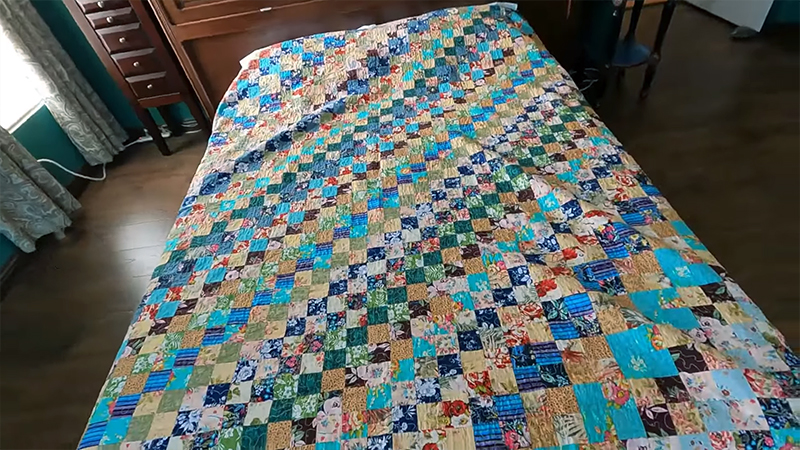
Continual improvement and adaptation are essential for the long-term success of your homemade quilt business. The world of commerce and customer preferences constantly evolve, and staying ahead requires a proactive approach.
Here are some key strategies for continual improvement and adaptation in your quilting business:
Customer Feedback and Communication
Listen to your customers. Encourage feedback and reviews and use them to identify areas for improvement.
Engage with customers through social media, emails, and surveys to understand their needs and preferences.
Market Research
Stay informed about the latest trends in quilting and home decor. This includes eyeing color trends, fabric preferences, and design aesthetics. Monitor your competition to identify opportunities and gaps in the market.
Product Development
Continuously refine your quilting techniques and explore new design ideas. Consider incorporating customer suggestions and requests into your creations.
Experiment with different sizes, styles, and fabric choices to diversify your product offerings.
Pricing Strategies
Periodically review and adjust your pricing to remain competitive and ensure sustainable profit margins.
Consider bundling or offering promotions to attract customers and boost sales during slow periods.
Marketing and Branding
Regularly update your website, social media profiles, and marketing materials to reflect your evolving style and product line.
Stay flexible with your marketing strategies and be willing to experiment with new channels and tactics.
Technology and Tools
Embrace technology to streamline your business operations. This might include using e-commerce platforms, accounting software, and customer relationship management (CRM) systems.
Stay up to date with industry-relevant software and tools that can enhance your quilting process and improve efficiency.
Networking and Collaborations
Build and maintain relationships with fellow quilters, artisans, and businesses in related industries.
Collaborate on projects or events that can help you tap into new markets or learn from others’ experiences.
Education and Skill Development
Invest in your skills by attending quilting workshops, online courses, or reading industry-related books and publications.
Stay open to learning new techniques and approaches that can set you apart as a quilter.
FAQs
Where can I sell homemade quilts?
Online platforms like Etsy, your website, local events, and boutiques are ideal places to sell homemade quilts.
How should I price my quilts?
Calculate costs, research competitors, and set a fair price. Transparency is key.
What to include in quilt listings?
High-quality images, detailed descriptions, dimensions, materials, care instructions, and pricing.
How can I market my quilts effectively?
Use social media, optimize your website, collaborate with influencers, and consider paid ads.
Are there legal considerations?
Yes, including business registration, tax compliance, and understanding copyright and permits, depending on your location and business setup.
Wrap Up
In the world of selling homemade quilts, passion meets purpose. You’re poised to embark on a fulfilling journey by implementing the strategies discussed.
Online marketplaces like Etsy offer global reach, while personal websites provide a canvas for your unique brand. Engaging with customers on social media channels adds a personal touch, and local events foster meaningful connections.
Remember, impeccable craftsmanship and effective marketing go hand in hand.
Your journey in selling homemade quilts is an artistic endeavor and a business venture. With dedication, creativity, and strategic planning, you have the potential to turn your craft into a flourishing enterprise.
Leave a Reply